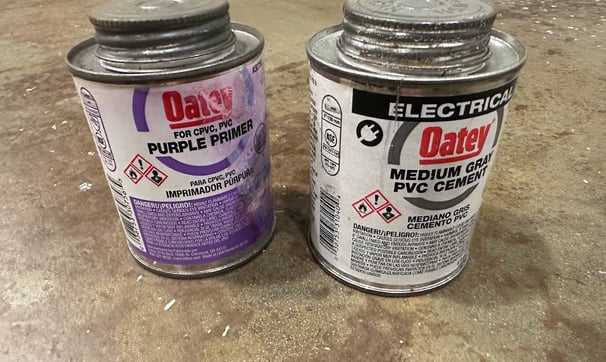PVC Glue: It's Not Glue at All!
VARIETIES OF ADHESIVES


This blog post demystifies PVC "glue" by explaining that it's actually a solvent cement used for chemically welding PVC components together, emphasizing the vital role of primer in preparing surfaces for a strong, leak-free bond.
Demystifying PVC "Glue": It's Not Glue at All!
When it comes to joining PVC pipes and fittings, you may have heard of "PVC glue." However, here's the surprising truth: PVC glue isn't really a glue in the traditional sense. In this blog post, we'll unveil the mysteries behind PVC "glue" and emphasize the crucial role of primer in creating strong, leak-free connections in your plumbing and DIY projects.
The Misnomer: PVC "Glue":
First, let's clarify the confusion – PVC "glue" isn't an adhesive in the conventional sense. It's actually a solvent cement designed to chemically weld PVC components together. This process creates a strong, water-tight bond that's crucial in plumbing systems and other PVC applications.
How PVC "Glue" Works:
Clean and Prep: Before applying any PVC solvent cement, it's essential to clean the pipe and fitting thoroughly. Even tiny particles of dirt or debris can compromise the bond.
Primer Application: Here's where primer comes into play. Applying a primer to both the pipe and fitting serves several vital purposes:
It cleans and prepares the PVC surfaces, removing any contaminants and promoting adhesion.
Primer softens the PVC, ensuring better penetration and fusion of the solvent cement.
It provides a visual indicator, turning the PVC surfaces purple, to confirm proper application before cementing.
Solvent Cement Application: Once primed, it's time to apply the solvent cement. Here's how the process works:
Brush a generous layer of solvent cement on the primed pipe and the inside of the fitting.
Quickly join the components, ensuring a full and even connection while twisting slightly to spread the cement evenly.
Hold the parts together for a brief period to allow the cement to cure.
Chemical Bonding: As the solvent cement dries, it chemically fuses the PVC molecules, creating a robust, permanent connection that is as strong as the pipe itself. This chemical bonding ensures a leak-free and durable joint.
Why Primer Matters:
The use of primer is non-negotiable when working with PVC. Here's why it's so crucial:
Enhanced Adhesion: Primer prepares the PVC surfaces for a secure bond, removing any barriers that might hinder adhesion.
Leak Prevention: Properly primed and cemented connections are far less likely to develop leaks over time, ensuring the reliability of your plumbing system.
Longevity: Primer and solvent cement create a long-lasting, durable bond that can withstand the test of time, making it essential for both residential and commercial applications.
In Conclusion:
So, the next time you embark on a PVC project or tackle a plumbing repair, remember that PVC "glue" is, in fact, a solvent cement that chemically welds PVC components together. And equally important, don't forget the primer – it's the unsung hero that prepares the surfaces for a reliable, leak-free connection. By understanding the science behind these essential materials, you'll be well-equipped to tackle PVC projects with confidence and precision.
